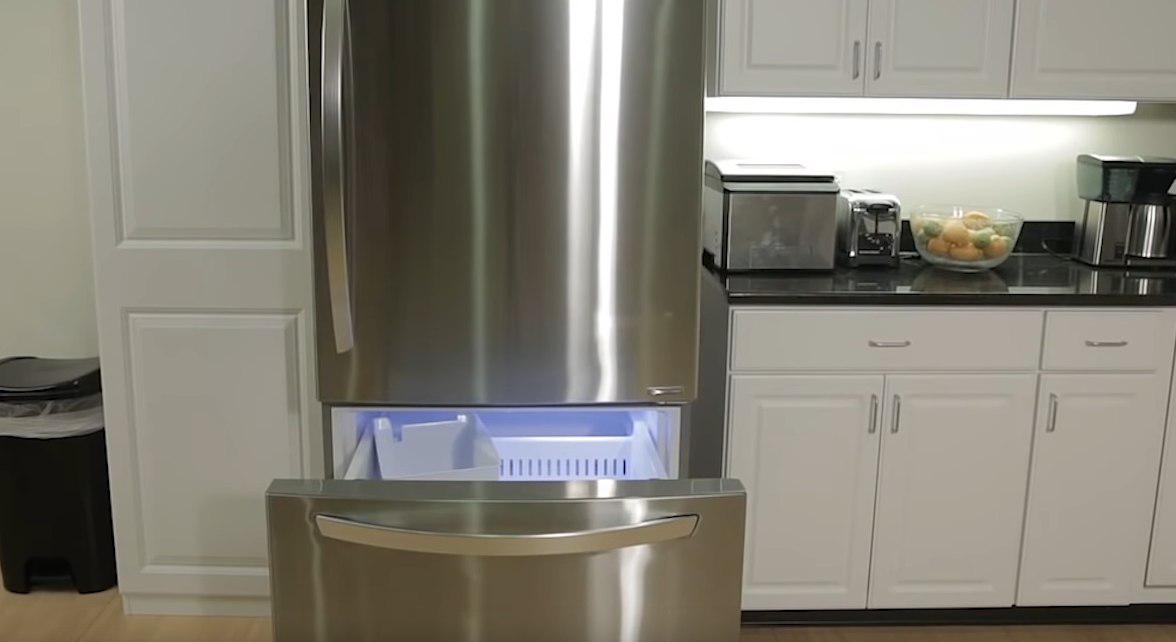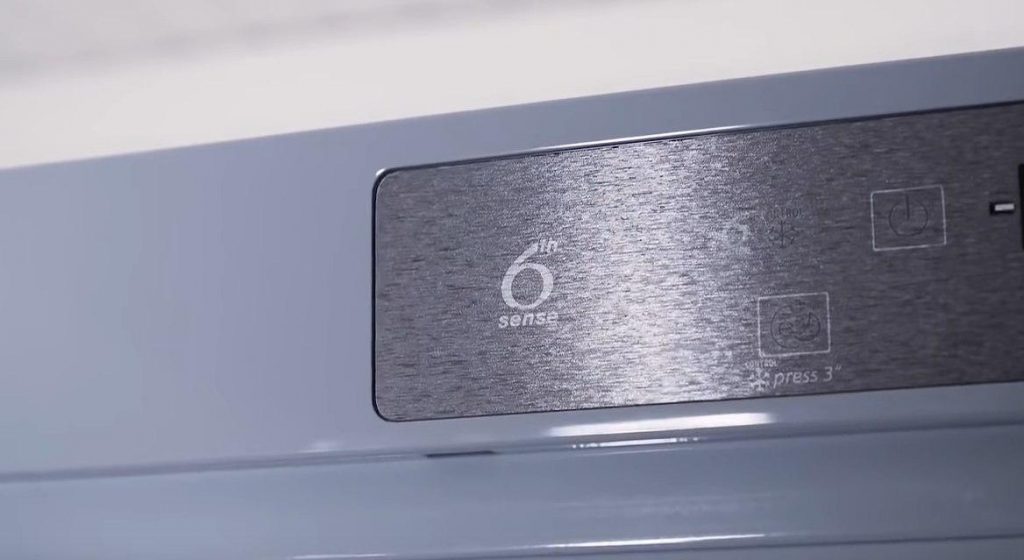Posts in Category: Repair Tips
How To Store Fertilizer In Your Fridge Safely
Fertilizer storage is a responsible and important process in agricultural activities. The quality of the crop depends on both the composition of the fertilizer and its storage.
The right approach to the design of premises for fertilizers
First of all, for storing fertilizers, it is necessary to allocate a non-residential, dry place that is well ventilated. If there will be several types of fertilizers, you need to allocate a separate compartment or rack for each of them. The building itself should be located no closer than 200 m / 656 ft from residential, public and industrial buildings and it should have two doors or gates located on the opposite sides. Also, allocate a site around the building for the preparation of fertilizers for their application.
The climate in the room is important. Humidity should not exceed 40% so that the fertilizer does not get wet or stick together. If the permissible humidity threshold is exceeded, the room must be ventilated urgently. The temperature should not fall below zero C / 32 F, and the maximum allowable temperature is 25-27 ° C / 77-80 ° F.
Storage of bulk fertilizers
Bulk fertilizers in loose and packaged form should be stored separately.
Loose fertilizers are placed in bulk (2.5-3 m in height) in different compartments by type and form. It is worth remembering that part of the embankment at the wall should not exceed 1.5 m.
Fertilizers in containers (ammonium nitrate exception) must be stacked in piles of 12-15 tiers with different directions of bags. It is better to put them on pallets, gratings or racks.
Stacked in piles of 10-15 bags in height are:
- Urea
- Ammonium sulfate
Placed in 18-20 rows:
- Ammophoska
- Nitrophoska
- Potassium chloride
Each type of fertilizer should be labeled with the name of the type, its content and the weight of the entire batch.
Liquid fertilizer storage
For the storage of liquid fertilizers, use horizontal or vertical cylindrical tanks.
A warehouse with liquid fertilizers must be equipped with pumps, a leakage protection system and other specialized equipment. The flooring must not allow fertilizer to enter the soil. Warehouses with liquid fertilizers should also have waterproofing neutralizing wells for storing spilled fertilizers.
Ammonium nitrate storage
Since ammonium nitrate is an explosive substance, it must be stored in a separate room or in an isolated section of the warehouse. The section should be made with a blank brick wall.
Ammonium nitrate is stacked in stacks of 10-15 rows of bags, the distance from the wall to the stack should be 1 m, between the stacks – 3 m. The warehouse itself and the section should have the “Ammonium nitrate” and “Explosive” signs.
Storage of ammonium nitrate under the open sky, canopy or fuel, and lubricants is strictly prohibited. Storage of ammonium nitrate is agreed with the state bodies of sanitary and fire supervision.
Outdoor fertilizer storage
When it is not possible to store fertilizers indoors, temporary storage on a specially prepared covered area is allowed. The site must be located in an elevated area that is cleared, covered with concrete/asphalt provided for the discharge of melt and rainwater.
When storing fertilizers in bulk, insulating material, such as film, is additionally laid on the surface.
The shelf life of fertilizers is always indicated on the packaging and on average lasts from 1 to 3 years, depending on the manufacturer. No fertilizer is recommended to be used after the expiration date.
Organic fertilizer storage
Organic fertilizers have their own specific storage. Similarly to inorganic ones, you need to allocate a place away from the living areas. Storage temperature should not exceed 60 ° C / 140 ° F, otherwise, all useful organic compounds are lost. If the temperature approaches the maximum mark, then it is worthwhile to moisten the manure or compost with the collected slurry or cover it with a layer of soil and then mix it all together.
The shelf life of organic fertilizers in raw form does not exceed 9 months. Prepackaged and specially dried manure, compost or peat can be stored for an unlimited amount of time and not lose its properties. The packaging in such fertilizers has an opening for ventilation.
When storing fertilizers, always adhere to safety rules and do not neglect them under any circumstances. Prepare the room, equip it and only then store fertilizer in it. When storing hazardous substances, it is necessary to consult with the appropriate authorities.


What exactly is rust?
Metal has always been used to build fundamental structures. Due to its strength and durability, it remains popular to this day. But like any other material, metal also has vulnerable sides. Their presence and causes the use of specialized means – paints on metal.
What is rust
The main disadvantage of metal is its susceptibility to corrosion. Rust on the surface of the metal is a consequence of oxidizing processes occurring in the metal. Rust on a small piece of metal quickly spreads further, and now the entire metal part is covered with an unpleasant red color. In addition to spoil decorative properties, the rust breaks the texture of the metal, making it brittle and not durable. There is one method of rust control. It should be scraped off the metal, treated with anti-corrosive primer, and covered with protective paint. However, now there are paint products on sale that are designed to protect the metal from the damaging effects of corrosion without additional treatment.
The pros and cons of anti-corrosion paint
It is not always possible to remove the rust from the metal. The affected surface may be large in area, or the place is difficult to access, or the part is metal of such a design that you can not get close to it. For such cases and created an anti-corrosive paint on the rust. The advantages of corrosion-resistant paint include:
- The possibility of applying the paint directly on the affected surface, without prior cleaning.
- Saving time, the material will not have to be covered with several layers of different preparations.
- Protective coating on the metal surface, designed to protect against moisture and dirt.
- Durability of the coating that protects the metal from corrosion. Up to 8 years of protection.
- Rapid drying of the paintwork material.
- Huge palette of colors, wide choice of shades.
The disadvantages of the anti-corrosive paint include the impossibility to paint surfaces, operation of which occurs at temperatures above 150 degrees. In addition, the toxicity of the paint does not allow its use where there is contact with drinking water.
Paint types
There are 5 types of metal paints depending on the composition:
- Metal epoxy paint. The addition of epoxy resins in this paint makes it toxic. Because of this, the use of epoxy paint is not widespread, household items are not allowed to paint with it. Paint is used rarely and only in places where the metal is exposed to high temperatures, as this paint can withstand them.
- Oil paint on metal. The oil paint contains oils and natural olive. The paint is used for interior finishing works. This paint is not suitable for outdoor work, as it is unstable to changes in air temperature. The protection of metal against corrosion will be broken.
- Alkyd paint for metal. Used for galvanized surfaces. The advantage of alkyd paint is its high degree of adhesion, it is a pleasure to apply such paint. But application near heated parts of the metal structure is prohibited – the paint is extremely flammable.
- Acrylic paint on metal. Despite the relatively recent appearance of this paint on the market, it has managed to win the respect of professionals. Acrylic coating is characterized by long-term protection of the metal structure, up to 8 years of corrosion-free existence. It is not toxic and can be used both outside and inside. Besides, it successfully withstands heating of a structure, it is used even for painting radiators of heating.
- Hammer paint on metal. The paint composition includes epoxy, alkyd and acrylic bases, added fine glass and aluminum powder. The name “hammer paint” was given for the similarity of the final coating to the surface of the hammer striker: rough to the touch with a pronounced metallic gloss. Resistant to moisture, vibration and temperature fluctuations. Wide range of colors and textures: Matt, glossy. Application in two coats replaces the primer and final coating.
Knowing the pros and cons, the specific application of each paint, you will make the right choice of anti-corrosive paint for the metal.
What to Consider When Buying a Refrigerator

What is the best time to buy a fridge?
The fridge is all about keeping stuff cold. Typically, people buy their fridge once they are done cooking and don’t need a refrigerator right away. You can go for cheap, well built, American freestanding fridges if you want the basics to get started.
Does it have to be free-standing?
The modern fridge is almost always considered to be free-standing. But, just like the front door, your fridge can still be mounted on a stand or shelf if you need a little more height.
The best time to buy a fridge depends on what the purpose of the fridge is for and how much space is available. Most of the money you’ll spend on the fridge will be on the front door, while the back door is used for storage.
Buy a 14″ refrigerator for a room with 5,000 sq. ft. of living space and use it for dining. The higher the ceiling, the more space you’ll have.
For a house that is currently under construction, where there are large rooms and narrow
There’s no right or wrong answer when it comes to buying a fridge, just buy what you like and make it yours. It’s hard to nail down the ideal time because all the consumers buy refrigerators for different reasons. For some, it’s a holiday gift. Other people will pick one because they’re broke. Those people are the best time to buy a fridge. As more and more people have families, your options have gotten bigger. The thing is, even if you have people over or even go out with friends on Valentine
Can a refrigerator explode?
Yes, it is a common hazard for heavy-duty vehicles that store food. A refrigerator may explode with sufficient force to cause an internal explosion that may damage the contents. Properly servicing a refrigerator can help reduce the risk.
When a refrigerator is out of service, the internal components may deteriorate. An overheated compressor may expand to great lengths with little warning, resulting in a catastrophic internal explosion.
Most cases are not serious, and are easily repaired if you have enough time and attention.
A refrigerator containing an unrefrigerated, unopened can of food or an open can containing unopened food can be seriously injured. It is common for this to be the result of a discarded can, even if the contents are clearly marked “Dangerous Goods.” If a warm, hot, and liquid food product is poured onto a hot plate, it will expand, allowing air to come into contact with the product. If this air comes in contact with a metal can or any other source of heat, it may overheat and explode.
Anyone who has ever worked with refrigerators has asked this question, and answered it with the same response: He doesn’t know. But that’s not to say that there aren’t some things that we don’t know. And one thing we do know is that things explode in a certain way, when they have a certain chemical reaction and temperatures and pressure, just like every other object in the universe.
“First of all, we need to understand where the carbon atoms are,” in your refrigerator.
What size fridge do I need?

The size of your fridge should be determined based on what you intend to keep it. Here are a few guidelines:
Small fridge: The average-sized refrigerator, as shown in the images below, is 23-inches wide and 7-feet tall. As small as this fridge is, it’ll hold all the ingredients you need.
Medium fridge: The average-sized fridge is 28-inches wide and 9-feet tall. If you have a medium-sized fridge, it should hold about 100 lbs. of food. I find a mini-fridge.
In my “Store Instructions” section, I listed the sizes that I have found work for me. If you’re in the same boat as I am, then we suggest you take a look at our “top fridge brands” section.
For a bigger fridge, simply place a temperature-controlled bag of low-fructose corn syrup (or any kind of sugar substitute) in each freezer compartment. When you open your fridge door for an hour or two, the bags will act as a “cold pad” to trap heat.
Lutron’s WiFi-enabled refrigerators have a user-defined size — but there are instructions below for allowing users to customize their own size. We’ve seen different sizes that work with a variety of different brands and models — so it’s probably a good idea to make sure your fridge is compatible before you make your final decision. If you’re setting up a universal system, you’re likely to get several sizes with different brands — and that means they could not be joined together without some slight modification.
What is the quietest mini-fridge?
It is really important to get the right size fridge to go with your growing cannabis plants. Here is a guide on the size and thickness of fridge for small and medium-size grow lights.
How long does the grow light have to be on a 25 litre or 25+ litre fridge?
The 250W HID light will normally last around 5-10 hours on a 25 litre or 25+ litre fridge, but be careful not to overheat the plastic. Some lights may be too bright (e.g., 1000W
It is important to select a refrigerator that has a large enough capacity. The refrigerator should have enough space to get the food out in one pass. It is recommended to buy a refrigerator that is approximately 4 inches larger in width and 1 inch taller than the depth of your door opening.
Prices on average go for between $100 and $200. Prices for larger sizes will fluctuate based on the amount of food you pack, however, there is usually a minimum price for larger sized refrigerators.
(Most people are going to need a 20, 30, 40-gallon fridge but since you’ve been using the 3-5 gallon-sized tubs, you’re probably thinking 3, 4 or 6-8 gallons.) Look at the outside size and look at the inside size. If you’re looking at a 20 gallon, then look for a 15’x18’x14′ area. (You can do a “little” calculation if you know how big it is so you know how many gallons you’ll need but in most cases a lot of people
https://obdguy.com/
